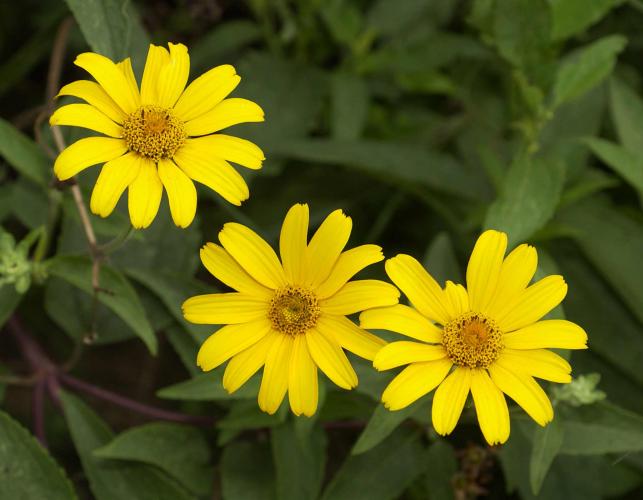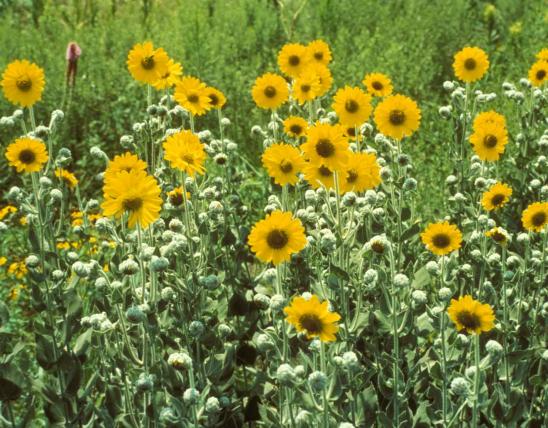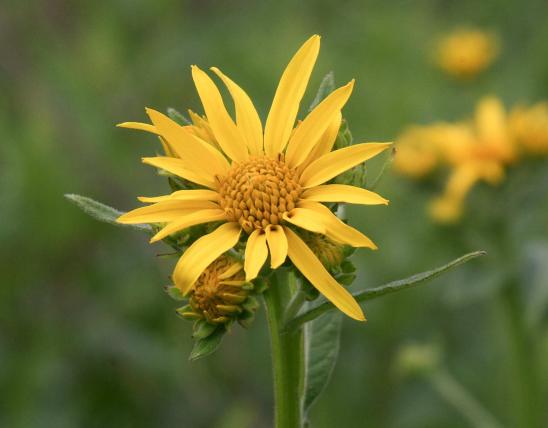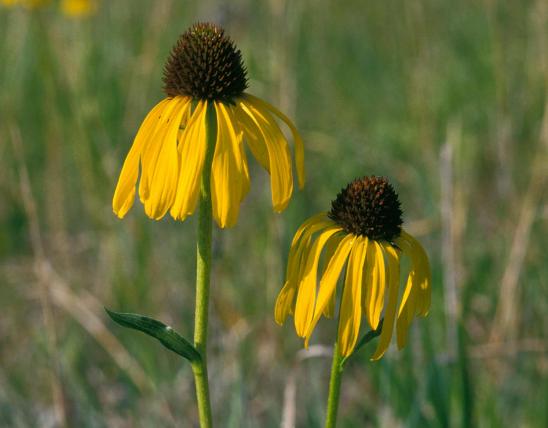
A clump-forming, spreading, branched, sunflower-like, short-lived perennial of variable height. Flowerheads about 2 inches across, distinctly orange-yellow when young, fading to light yellow; rays 8–15, usually 10. Blooms May–September. Leaves opposite on long petioles, broadly ovate to nearly triangular, without hair; with large, regular teeth. Seeds angular, while those of Helianthus species are flat.
Similar species: This is the only species of Heliopsis in Missouri. You can distinguish it from the many closely related true sunflowers (genus Helianthus) by its conical central disk and by its ray flowers, which dry out but persist, instead of withering and falling off.
Common names of plants can be confusing; the name “sunflower” can technically apply to any of the thousands of species in the sunflower family, include species like this, in the genus Heliopsis. However, many people only consider members of genus Helianthus (which translates to “sunflower”) as “true” sunflowers. For more about members of that genus, visit their group page.
Height: 2–5 feet.

Statewide, but apparently absent from the Southeast Lowlands.
Habitat and Conservation
Occurs in dry areas, edges of woods, roadsides, railroads, fields, and waste places. Also prairies, thickets, and open woodlands.
Human Connections
Ox-eye is a good native plant for sunny Missouri gardens. It tolerates dry spells, erosion, and poor soils, and its showy, butterfly-attracting flowers can be cut and used in arrangements. Several cultivars are available. Heliopsis is Greek for “sun-eye,” and helianthoides means “like a sunflower.”
Ecosystem Connections
Butterflies, skippers, and other insects visit the flowers for nectar, and birds, such as finches, and rodents eat the seeds.





























